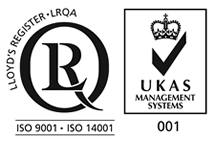
Main Products
Copyright 1998-2025 Firmetal Group All Rights Reserved. | Sitemap
The practical Nb-Ti superconducting materials are mostly simple binary alloys, containing 35% ~ 55% Nb; Some tantalum and zirconium can be added to improve superconductivity. Due to the stability of superconductivity, Nb-Ti superconducting materials are commonly used as matrix materials with pure copper, pure aluminum or copper-nickel alloy, and inserted into multiple strands of Nb-Ti fine cores to form composite multi-core superconducting materials. A superconducting wire can contain dozens to tens of thousands of Nb-Ti cores, with a minimum core diameter of 1μm. In addition, depending on the use of different occasions, it is often necessary to twist and transpose the multi-core wire to reduce loss and increase electromagnetic stability. The basic processing technology of Nb-Ti superconducting materials is as follows: pure titanium and pure niobium are melted into alloy ingots by consumable electric arc furnace or plasma furnace, and then the blanks are opened by hot extrusion, and the bars are formed by hot rolling and cold drawing. Then the Nb-Ti alloy rod is inserted into the oxygen-free copper tube as the base material to form a single core rod. And after multiple composite assembly, processed into multi-core Nb-Ti superconducting wire and strip. The material needs to be subjected to several large cold processing (processing rate of more than 90%) and low temperature (below 400℃) aging heat treatment, so that the superconductor can obtain enough effective pinning center and improve the superconducting electrical properties of the superconducting material. Due to the characteristics of no joule heat loss caused by the zero resistance effect of superconductors, and the ability of Nb-Ti superconductors to carry high transport currents under strong magnetic fields, Nb-Ti superconductors are particularly suitable for electrical applications with high currents and strong magnetic fields. For example: high-field magnets, generators, motors, magnetic fluid power generation, controlled thermonuclear reaction, energy storage devices, high-speed maglev trains, Marine electromagnetic propulsion and transmission cables. So far, the most successful applications of Nb-Ti alloy superconducting materials are: large cyclotron high energy accelerators with a diameter of more than 1km and magnetic nuclear resonance imaging diagnostic instruments widely used in the medical sector. Although in the mid-1980s scientists discovered copper-oxygen high-temperature superconductors that could operate at liquid nitrogen temperatures (77K); However, niobium titanium alloy superconducting materials with their own unique excellent processing properties, good low-temperature superconducting electrical properties, relatively low cost and decades of research and production and application and development experience, niobium titanium alloy is still the world's most important practical superconducting electrical materials.
Tag: Nb-Ti superconducting, Nb, tantalum, zirconium, niobium titanium alloy superconducting